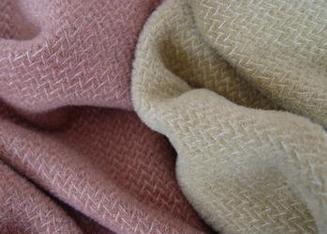Textile exports Switzerland is expected to zero tariff
 Recently, witnessed by Premier Li Keqiang of the State Council and Yuri Maurer of the Swiss Confederation, Chinese Minister of Commerce Gao Hucheng and Swiss Federal Commissioner and Minister of Economy Schneider-Aman have signed the "On the conclusion of China-Switzerland free trade agreement negotiations in Berne, Switzerland." Memorandum of understanding. This marks that the Sino-Swiss Free Trade Agreement, which was formally launched in January 2011, ended the “long-distance running†of the nine rounds of negotiations in two and a half years and reached agreement on substantive issues.
Recently, witnessed by Premier Li Keqiang of the State Council and Yuri Maurer of the Swiss Confederation, Chinese Minister of Commerce Gao Hucheng and Swiss Federal Commissioner and Minister of Economy Schneider-Aman have signed the "On the conclusion of China-Switzerland free trade agreement negotiations in Berne, Switzerland." Memorandum of understanding. This marks that the Sino-Swiss Free Trade Agreement, which was formally launched in January 2011, ended the “long-distance running†of the nine rounds of negotiations in two and a half years and reached agreement on substantive issues. "The negotiation of the China-Switzerland Free Trade Zone is the first free trade zone that China has negotiated on the European continent. Previously, we ended negotiations with Iceland's free trade zone. The negotiation in the free trade zone in Switzerland was the first in the European continent. The significance is very significant," Yu Jianhua pointed out.
According to reports, the Sino-Swiss Free Trade Agreement is one of the highest level and most comprehensive free trade agreements reached by China in recent years. First of all, the percentage of zero tariffs agreed upon by both parties is high. Second, the agreement involves many new rules, such as environmental, labor and employment cooperation, intellectual property rights, government procurement information exchange, competition and so on.
Yu Jianhua said that Switzerland will immediately implement zero tariff on China’s 99.7 percent of its exports, and China will eventually impose zero tariffs on 84.2 percent of its exports. If some tax-reduced products are added, the percentage of products that Switzerland participates in tax reduction is 99.99 percent. China is 96.5%.
Specifically, in terms of industrial products, Switzerland promises that since the date of the agreement’s entry into force, China will impose zero tariffs on all industrial products exported by Switzerland, including China’s larger export interest and its high export share, textiles, clothing, Shoes, auto parts, metal products, etc.
In terms of relatively sensitive agriculture, the Swiss side implemented zero tariffs on more than 960 kinds of agricultural products in China, which involved more than 76% of China's exports to Swiss agricultural products. There are also 403 kinds of agricultural products that partially reduce taxes in China.
In terms of trade in services, Switzerland has for the first time agreed to provide time limits for the processing of visas, work permits and residence permits. It has agreed to conduct dialogues with China on cooperation in Chinese medicine and has made further commitments in the fields of tourism and translation.
“According to the contents of the agreement, China’s profitability is still quite obvious. Switzerland’s trade volume with China’s exports of 99.7% all agrees to implement zero tariffs. There is no transitional period and it is agreed to be implemented from the effective date of the agreement. In addition, the remaining 0.3% There are 0.29% tax cuts, and there is an exception of 0.01%." Yu Jianhua pointed out.
At the same time, the Sino-Swiss free trade agreement is a mutually beneficial and win-win agreement. China has also made some open commitments based on the level of competition in Switzerland, the situation in the Chinese market, and the affordability of the industry. Including: 84% of product imports have zero tariffs on Switzerland, of which 67% agreed to implement zero tariffs from the date of entry into force of the agreement.
At the same time, China has made exceptions such as transition period processing in sensitive areas including machine tools, textile machinery, chemicals, and automobiles.
For the Swiss watch that consumers are more concerned about, Yu Jianhua said that the tariff will be reduced by 60% in 10 years and will be reduced by 18% in the first year. However, he also stated that tariffs are only a factor that affects the price of watches, and the key is still determined by the relationship between supply and demand in the market. "In addition to tariffs, we also have import link taxes, value-added tax, and consumption tax. These are not areas covered by the free trade zone. The big trend is that prices should be reduced by a certain amount. How much is reduced, it is still uncertain."
Changxing Xinyang Textile Co., Ltd. , https://www.xinyangtextiles.com